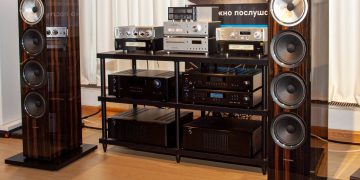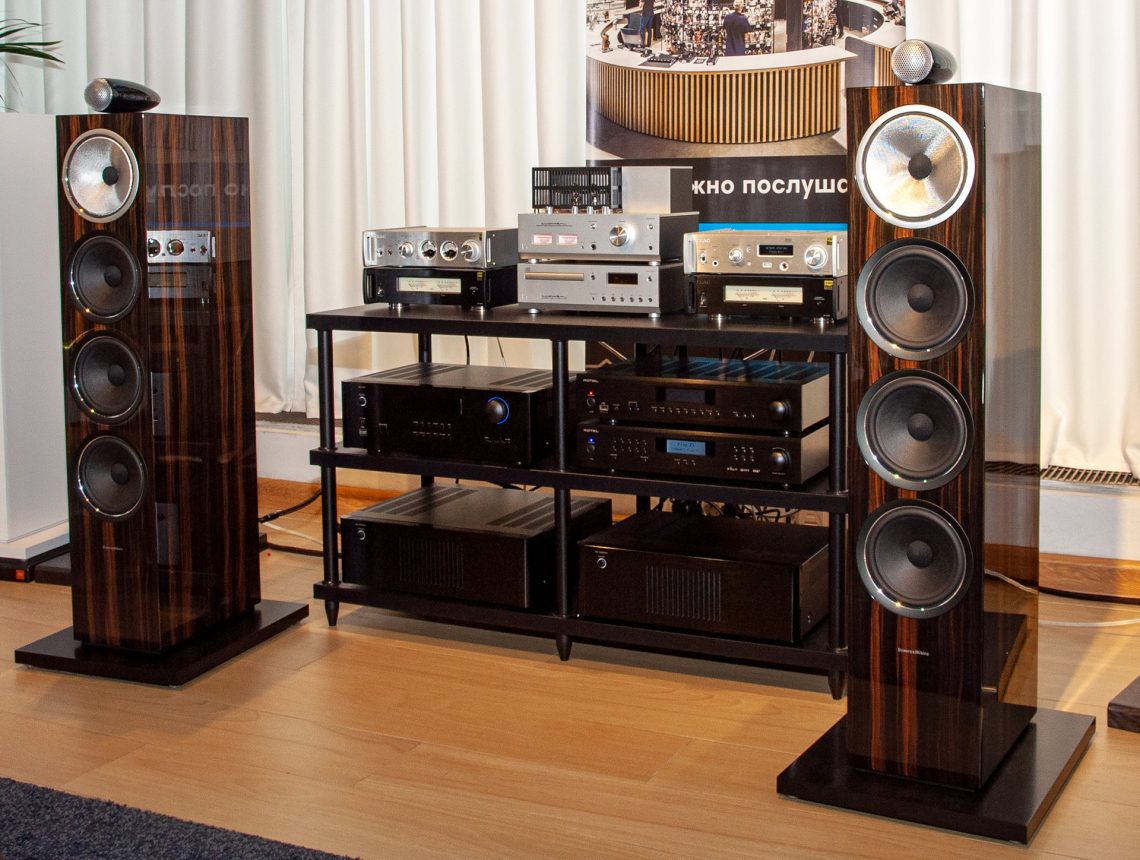Recently, Bowers & Wilkins has updated its range of speakers. The changes were not "cosmetic" at all. New technologies have replaced the old ones used for many years. Just imagine, research to create a new midrange driver has been carried out for the whole 8 years! According to the developers, almost all nodes of loudspeakers have been improved.
And so I had an occasion to visit Dr.Head salon in Novy Arbat. Previously, I was sure that Dr.Head specializes only in headphones and everything associated with them. However, it turned out i was wrong. The spacious and bright showroom has a wide range of amplifying equipment, acoustics and vinyl. Several listening rooms, one of which showed me the senior in the updated 700th Bowers & Wilkins range, model 702 Signature.
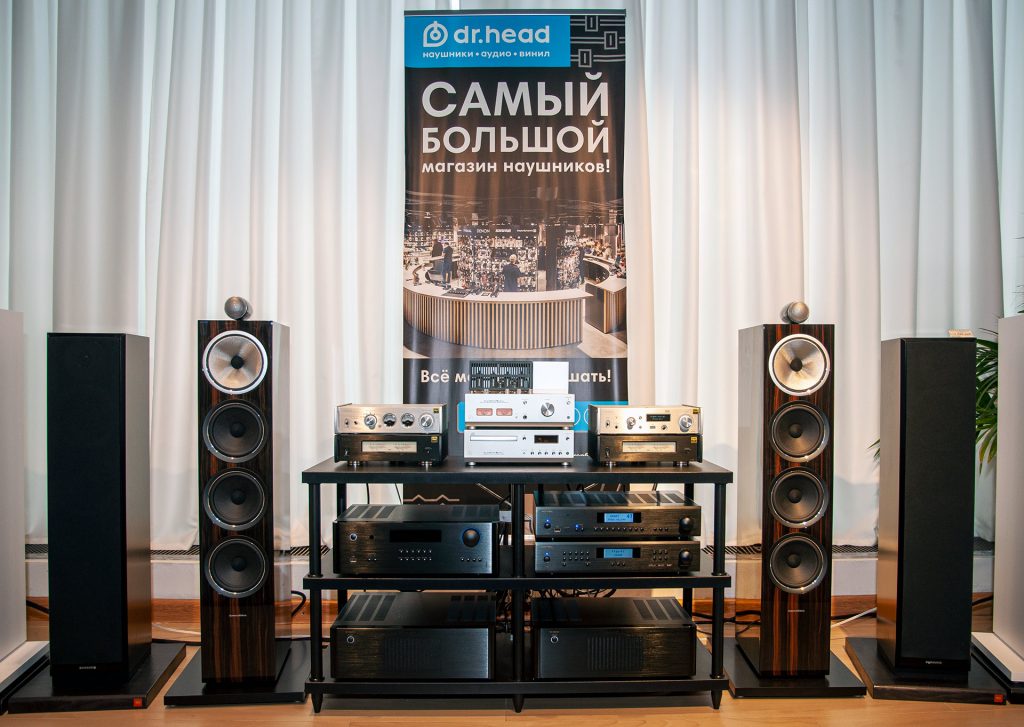
So what changes are waiting for us in the new lineup? The tweeter of the special dome design is responsible for the high frequencies, up to 28 kHz. In the younger lines of the company are used aluminum "tweeters", in the older lines - made of diamonds. A multilayer principle is also used here. As a basis very thin and light aluminum dome with thickness of only 30 microns is taken. A carbon layer is sprayed over it using PVD (Physical Vapour Deposition) technology, which allows to preserve its lightness and at the same time to add rigidity. Behind it there is a ring of pure carbon, which also adds stiffness, but already along the perimeter of the dome.
Compared to a pure aluminum dome, the aluminum and carbon sandwich made by this technology maintains piston mode in a given range. But this is not all. To reduce resonances, the tweeter body itself is made of a solid piece of aluminum - as in the senior line - and the frequency of the first resonance is shifted for 47 kHz. As a result, such measures can dramatically reduce distortion, achieve the most transparent sound and good treble resolution.

For many years, speakers made of yellow aramid fibers were responsible for the midrange in B&W acoustic systems. But the technology does not have stopped there. This was replaced by cones with optimized flexibility, which were developed over a period of 8 years. A new development called Continuum made it possible to quickly attenuate the non-linear movements of the different areas of the cone. Together with the adapted mechanical decoupling, borrowed from older models, distortion was significantly reduced and the sound became more natural and transparent. It is also important that they are fully manufactured in the UK under full engineering control.
The bass drivers (and there are three for each channel) have also been improved. The shape of the Aerofoil cone with variable thickness has been optimized using computer simulation. The improved shape of the cone back allows to reduce distortion when the speaker leaves the piston mode. Sandwich technology is also used here - a lightweight EPS fill inside. The result is a cone with high strength and stiffness exactly where you need it most, providing deep and articulate bass. And it's not a question of quantity, but of bass quality. For serious bass response in relatively small packages, the use of resonant design is essential. In this case we use a perforated structure reflex (Flowport), and it is located on the back of the cabinet.
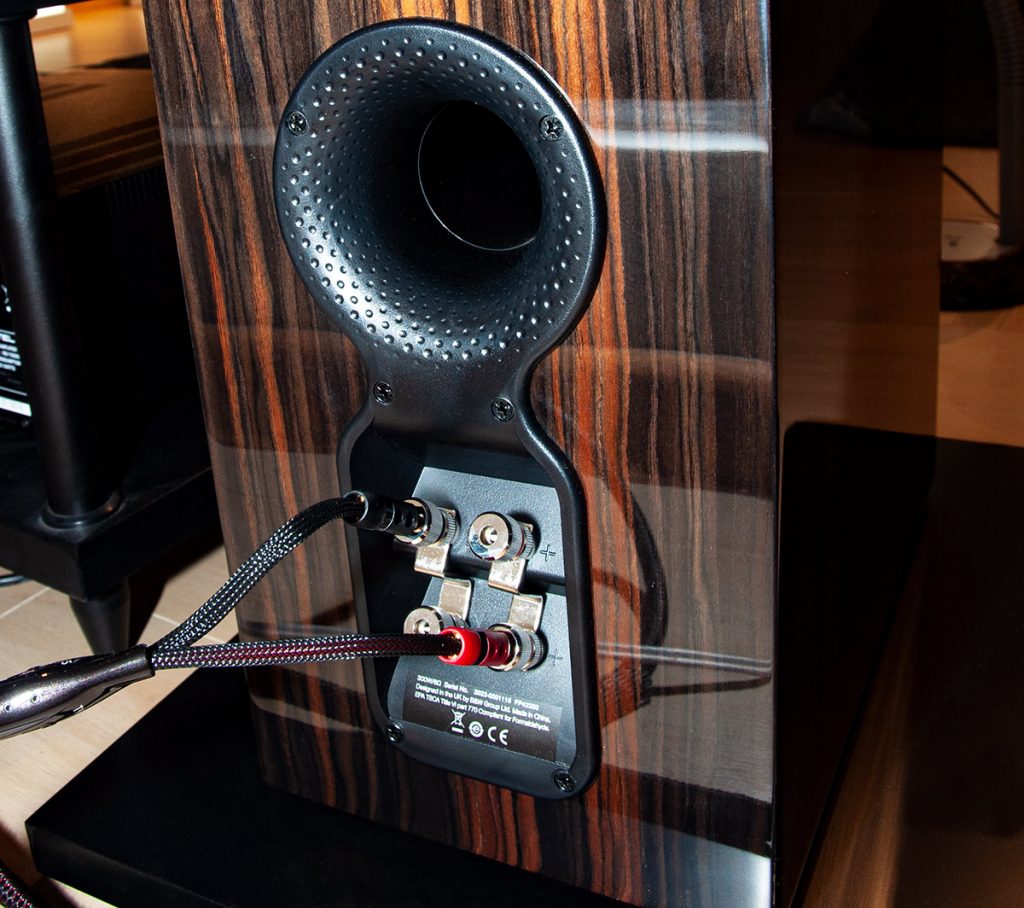
Of course, a serious improvement was made to the crossover, the details of which were carefully selected to ensure maximum performance of the speakers. Under the reflex port there are two pairs of terminals, which means that it is possible to connect via a bi-amp system with separate bass amplification. This can be useful for setting the right bass level in a particular room.
Externally, the speakers are finished with natural ebony veneer with multi-layer varnish coating. The glossy finish is so shiny that it reflects all the surrounding objects. Depending on the lighting, the depth and saturation of the wood texture noticeably changes. That can be well beaten in the interior. The set also includes a massive plate stand, spikes and grills.
I started listening to loudspeakers with a monobrand set - Luxman D-N150 turntable and Luxman SQ-N150 amplifier. I turned on my favorite disc with rock ballads. The first impression is that the low frequencies in the speaker are all right. I decided to check on A.Piazzolla's records - the double bass filled the room space, it will be echoed by luxurious piano bass chords.
I listened to the piano and in Liszt's transcendental etudes - they sounded very richly. Luxman reproduces them quite warmly. The lower middle is especially full, the top is unobtrusive.
Authentic baroque instruments of Christina Pluhar and countertenor Philip Jaruski (album Los Pajaros Perdidos) - the sound is pleasantly ambient, maracas are gently spread out, drums melodically set Latin American rhythms.

However, the Luxmanns in combination with the acoustics of the B&W 702 Signature seemed too soft. You always want to highlight the nature of the sound of the component that you are listening to. And also to choose the most successful combination of components. So I decided to try other options.
For example, to keep the player Luxman D-N150 as a transport, and to use the DAC built into the integrated amplifier Rotel RA1572. So how did it work? Maracas immediately became sharper, more neutral. As well as the plates in the brass band of the Federal Border Guard Service, the metal became more "metal". The brass band added vigor to the whole.
The recording of Swan Lake showed that the tonal balance had improved slightly. But the mid-bass has kept its density, the instruments play lively and fascinating. The amplifier on the EL84 lamps plays a significant role in this. It is worth paying attention to the fact that Luxman D-N150 with its finger tubes has only 10 W per channel! This means that the B&W 702 Signature is very responsive even to low power amplifiers. Yes, this amplifier, despite the beauty of its audio delivery, cannot boast special muscles, its path is more sensitive speakers. Lamp bass is pleasant even when the amplifier "does not pull", it "clips" not as noticeable as transistor.
Switched to Rotel RB-1582 MKII power amplifier. Not surprisingly, the tonal balance has become even more smooth. Tried to give it some heats. I should say that the B&W 702 can play very loud and sound in a not a small room.
The Rotel DAC in combination with the Rotel RB-1582 MKII provides a more transparent and neutral sound. But is this neutrality always needed? Naturally, the tube charm and special engagement are gone, but the flatness of the range is added, especially in the bass-mid-bass range.
While I was writing it all down in my notebook, I played the recording of "Swan Lake" in a brilliant performance of the orchestra under the direction of E. Svetlanov. I did not want to stop it.
I noticed for myself that when looking for a tube amplifier for the B&W 702 Signature, you should be careful with its selection. Since the speaker's bass register is rich, you should not inflate it with a weak lamp. Otherwise, you will lose legibility and the range emphasized by the speaker will not look great. But a successful choice will give you an unforgettable experience.
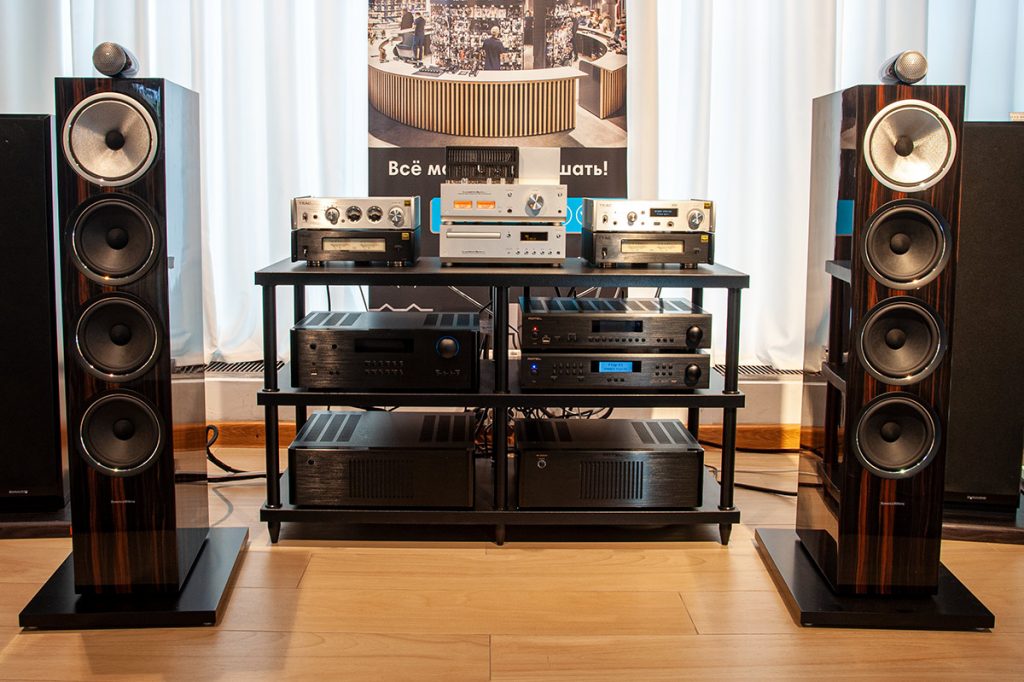
Three tenors. The scene built by the speaker in conjunction with Rotel quite allows you to hear the location of the great singers relative to each other. They are in the foreground, but the orchestra is not lost.
"Kalinka" performed by V. Eliseev's band is very hearty.
A more serious repertoire is Chechilia Bartoli's album Petersburg. For the female vocals, the system did not save. Voice filled, live, transmitted drama and important intonation edges.
Test for tone and microdynamics. Vivaldi. Here it was felt that a tube amplifier would be more suitable for transmitting the nuances of the violin's timbre. At the same time, the accompaniment harpsichord is very clear in detail. The second or third voices of the strings are not lost either. The dynamics are on a good level.
Chopin performed by A. Rubinstein in the Great Hall of the Moscow Conservatory in 1964. Very emotional.
High frequencies are unobtrusive. They do exist, but do not attract attention. Here you immediately think about the technologies used. Probably, this is what you should aim for in the audio construction - the system does not attract attention, but allows you to give yourself to the music.
It should be noted that loudspeakers are quite responsive to changes in the system composition. They allow you to choose components according to your own musical preferences. And the "fine" tuning of the system's tonal balance can always be produced by cables.
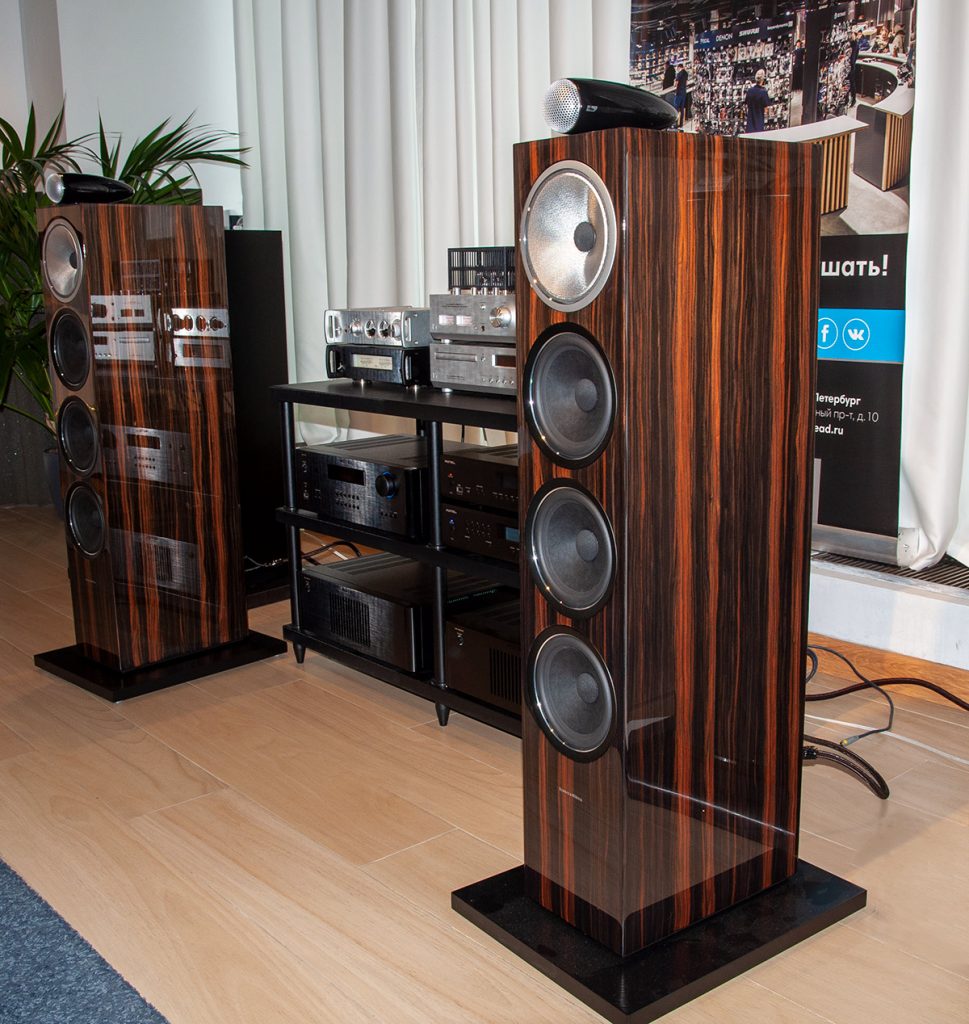
Test system cosists of:
Player (transport/DCAP) - Luxman D-N150
Second DAC - Rotel RA1572
Amplifiers - Luxman SQ-N150 and Rotel RB-1582 MKII
Cables - interblock RCA Luxman, acoustic - Audioquest Type 5, optical Audioquest Vodka.
Recordings:
A.Piazolla (Astoria, Fuga Libera, 2006)
Best of The 3 Tenors (Decca, 1990)
Orchestra of the Russian Federal Border Guard Service (records from 2000-2002).
"Swan Lake" (E. Svetlanov, Melody, 1987).
A. Vivaldi (Giuliano Carmignola, Concerto in G minor, RV 331, Deutsche Grammophon, 2006)
F.Chopin (A.Rubinstein, Melody, 2010)
C. Bartoli "St. Petersburg" (Decca, 2014)
The Red Army ensemble of V. Eliseev (The soul of Russia, 2014)
Los Pájaros Perdidos (Virgin Classics, 2014)
Legend Rock Ballads volume 2
The author of the review: Vyacheslav @Staudio
